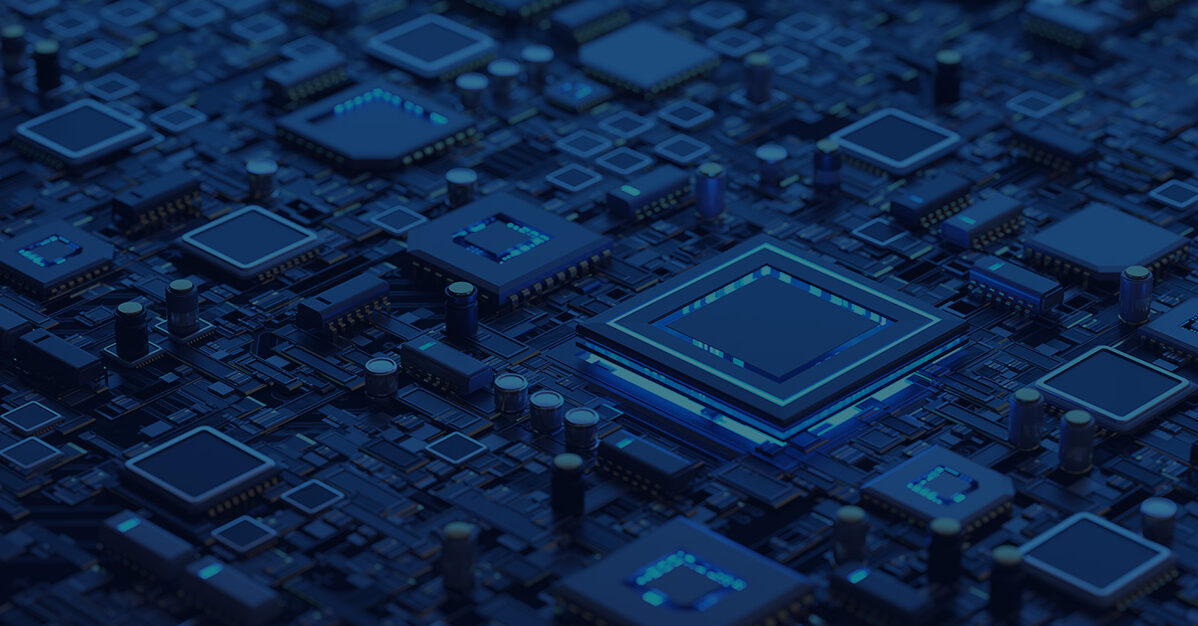In the era of skyrocketing data speed and volume requirements, Field-Programmable Gate Arrays (FPGAs) Design play a pivotal role in pushing the boundaries of high-speed transceiver design. This blog delves into the intricacies of high-speed transceiver design with Ethernet speeds leaping to 400 Gbps and PCIe lanes accelerating to 32 GT/s per lane. It explores the common development challenges FPGA designers face, including the best practices for managing power efficiency and cost, integrating standard protocols like Ethernet and PCIe, and ensuring signal integrity in FPGA designs.
By understanding these critical aspects, engineers can navigate the complexities of FPGA design and achieve optimal results in their next project.
Understanding FPGA and High-Speed Transceivers
What is an FPGA?
Field-Programmable Gate Arrays (FPGAs) are incredibly versatile silicon devices that you can reprogram to perform a wide array of functions—from simple logic gate operations to complex computational tasks. What sets FPGAs apart is their flexibility; unlike traditional fixed-function chips, FPGAs can be tailored to meet the specific needs of any project, making them a staple in modern electronics design.
The Role of High-Speed Transceivers
High-speed transceivers serve as the bridge in connecting FPGA internals with external components through high-speed differential signals. These connections are crucial for various applications, including HDMI, Ethernet, and PCIe interfaces, requiring adherence to industry-standard protocols.
However, the implementation of these standards often presents a balancing act between cost, development time, and design complexity. So, there are two primary approaches to incorporating transceivers into FPGA designs:
- External Transceivers: These are discrete components offering greater flexibility in terms of protocol support and potentially lower-cost FPGAs. However, they can introduce design complexity due to additional components on the Printed Circuit Board (PCB) and may result in higher overall project costs.
- Internal Transceivers: Embedded within the FPGA fabric, these transceivers simplify the design process but may limit protocol options and increase FPGA cost.
Navigating Design & Development Challenges
While high-speed transceivers unlock a world of high-performance possibilities in FPGA design, they also present several challenges that designers need to be prepared for:
- Power Efficiency and Cost Management: High-speed data transfer often comes at the cost of increased power consumption. However, with careful design techniques and power-efficient FPGA options, designers can achieve a desirable balance between performance and power efficiency.
- Optimizing Signal Integrity for Error-Free Data Transmission: Signal integrity is paramount in high-speed transceiver design. Techniques like proper PCB layout with controlled impedance, minimizing crosstalk between signal traces, and using high-quality components are all essential for maintaining signal integrity and ensuring error-free data transmission.
- Managing Design Complexity for Faster Development and Reduced Costs: High-speed transceiver design can introduce complexity, potentially leading to longer development times and increased costs. FPGA development tools such as simulators and early trial compilations can help streamline the design process, identify potential issues early on, and avoid costly errors.
- Verification and Validation for Reliable System Operation: Rigorous verification and validation processes are essential to ensure the functionality and performance of the FPGA design, including the high-speed transceivers. This may involve simulations, hardware testing, and loopback testing to identify and rectify any problems before deployment.
Overcoming Challenges with Right High-Speed Transceiver Selection
By carefully considering the challenges and your specific project requirements, you can make an informed decision when selecting the right high-speed transceiver for your FPGA design after careful consideration of several factors:
Understanding Transceiver Architecture:
Understanding the dual-channel nature of high-speed transceivers is essential. This includes two key sublayers:
- Physical Coding Sublayer (PCS): This sublayer handles the digital logic associated with the chosen communication protocol (e.g., Ethernet, PCIe). It performs data encoding/decoding, framing, and error correction tasks.
- Physical Media Attachment (PMA) sublayer: The PMA sublayer focuses on the physical aspects of data transmission. It converts digital signals from the PCS into high-frequency electrical or optical signals suitable for transmission over the chosen medium (e.g., copper cable, optical fiber).
Optimizing PCB Layout to Preserve Signal Integrity in FPGA:
High-speed signals are delicate and susceptible to degradation if not handled meticulously. Careful attention to PCB layout and material selection is crucial to minimize signal integrity issues. This may involve using high-quality materials to minimize signal attenuation and ensuring proper component placement to reduce interference.
Implement Clocking and Jitter Management Strategies:
Dedicated, low-jitter reference clocks are paramount for maintaining signal integrity, underscoring the need for stringent performance specifications for clock sources.
Ensuring Success: Beyond Transceiver Selection
Beyond the core selection and design challenges, here are some additional considerations to ensure the success of your high-speed FPGA project incorporating transceivers:
- Understanding High-Speed Interface Protocols (Ethernet and PCIe): Familiarity with popular high-speed protocols like Ethernet and PCIe is essential for selecting compatible transceivers and designing the interface logic correctly.
- FPGA Cost Management: While high-speed transceivers can enhance performance, they can also increase overall project costs. Careful consideration of cost throughout the design process, including component selection and power consumption, is crucial for staying within budget.
- Staying Updated with the Latest Technologies: The FPGA landscape is constantly evolving, with new transceivers and capabilities emerging regularly. Designers should stay updated with the latest advancements to ensure they are using the most suitable technologies for their projects.
Fidus: Your Partner in FPGA Excellence
Our deep expertise in FPGA design, including with AMD/Xilinx and Versal, and Altera (formerly Intel)’s Agilex (to name a few),combined with a profound understanding of high-speed transceiver challenges, enables us to offer tailored solutions that meet the specific requirements of our clients. From accelerating product development to managing design complexities and optimizing cost efficiency, Fidus stands ready to extend your team’s capabilities.
Ready to put your newfound knowledge of high-speed transceivers into action? Download our Whitepaper “Best Practices for High-Speed Transceiver in Today’s FPGA Designs”. This comprehensive checklist guides you through every crucial step.
Download it here.




